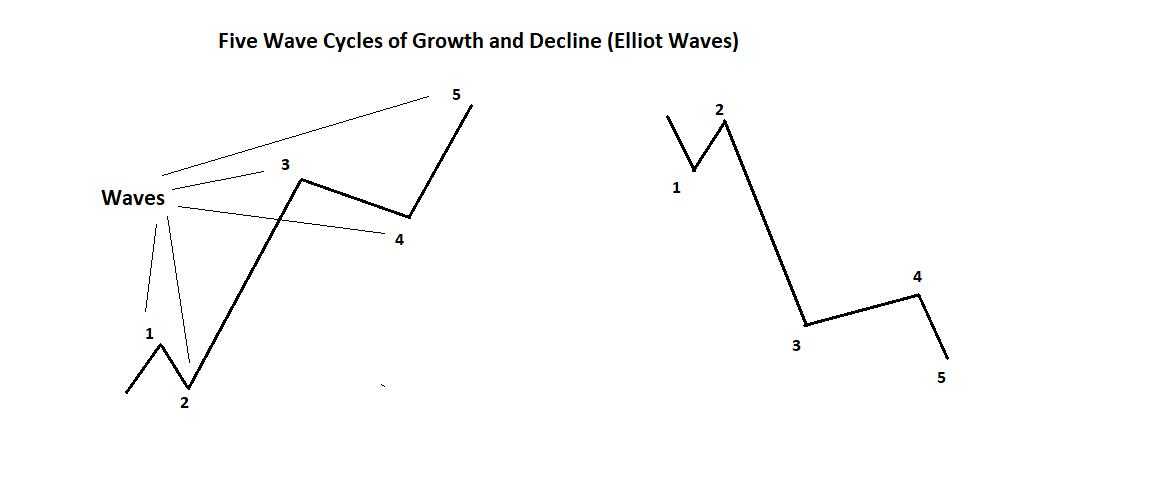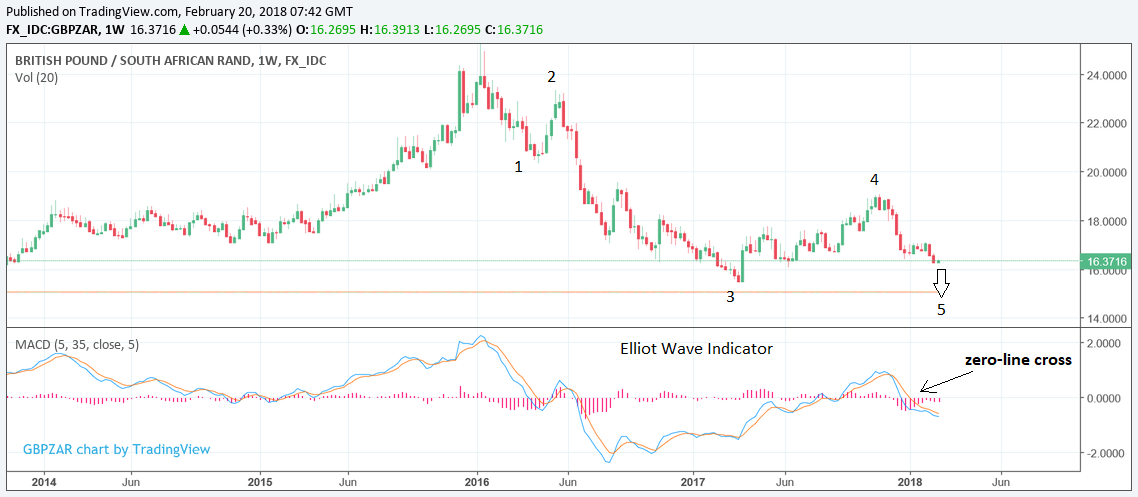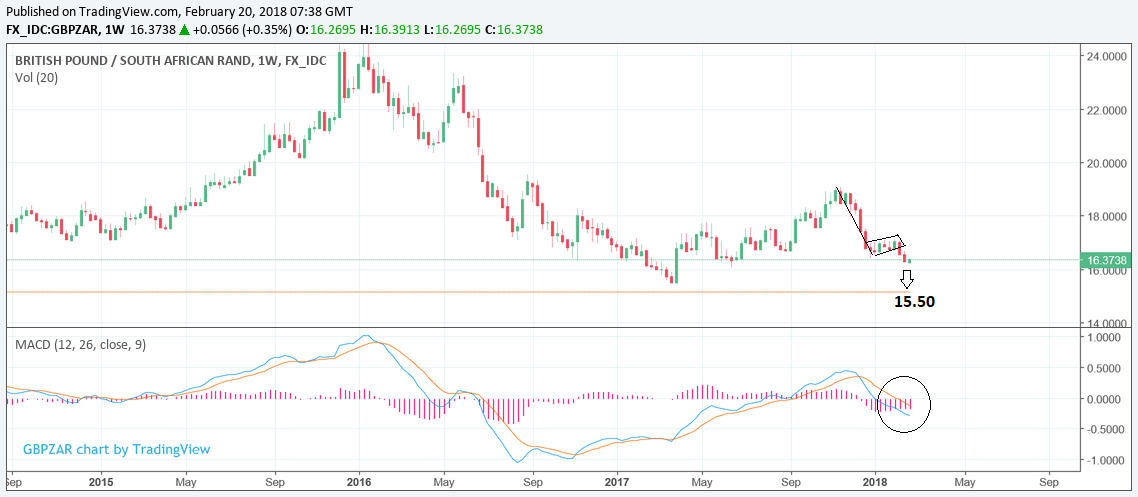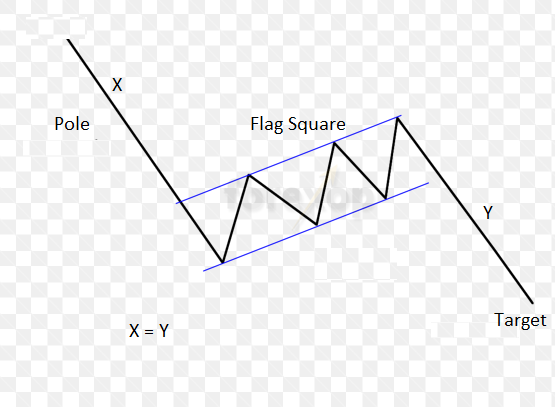Pound vs. Rand: Multiple Signals Herald More Downside with 15.50 In Crosshairs

© DragonImages, Adobe Stock
The South African Rand has strengthened against the British Pound due to an improving political outlook - we think there is a good chance it will continue.
There is a theory that all natural phenomena - including exchange rates - follow a five-wave cycle of growth and decline.
The cycle of growth goes something like this: wave 1 sees the initial budding forth, wave 2 a correction back down in which most of the early gains are given back, wave 3 a further, much stronger period of grow to a new high, wave 4 a shallower, plateau-like, correction of 3 and the final wave 5 which can come in a variety of forms but which usually reaches a new all-time high.
The five wave downcycle is the same only the inverse; it is also currently relevant to the chart of GBP/ZAR.

These cycles are known as Elliot Waves after the man who discovered them, a convalescing railroad accountant by the name of Ralph Waldo Elliot.
He discovered them by tracking prices for the Dow Jones Industrial Average (DJIA) as he lay in bed recovering from his illness.
Every hour he'd clock the price of the DJIA and after a while, he noticed patterns and found he could predict where the index was going to go next with unerring accuracy.
What is true for the DJIA could also be true for the Pound-to-South African Rand exchange rate at the current time, with the pair currently declining in what looks very much like a classic bearish 5-wave Elliot wave.

The 5-wave cycle on GBP/ZAR probably started at the 2016 highs at over 25.00 GBP/ZAR. From that peak wave 1 fell down to the April lows at 20.30, which then corrected in a wave 2 up to 23.33 and then went down again in the long, strong wave 3 which bottomed in March 2017 at 15.49. That was then followed by wave 4, which rose steadily to the November 2017 highs at 19.08. We are not probably in the final wave 5 lower which should go as low as wave 15.50, if not even lower.
The probability that GBP/ZAR is in a five cycle of decline is reinforced by evidence from the Elliot Wave Indicator in the lower pane.
The fact it has moved below the zero-line is a signal wave 4 has ended and wave 5 has started.
Get up to 5% more foreign exchange by using a specialist provider to get closer to the real market rate and avoid the gaping spreads charged by your bank when providing currency. Learn more here
Bearish Flag
The Elliot wave is not the only technical feature suggesting the exchange rate could fall further, another compelling sign which we have already discussed in previous posts, is the bearish flag pattern.
Bear flags occur when prices move down steeply, as they did after the November 2017 peak, but then abruptly stop and start going sideways in a tightly packed narrow range.

The combination of the steep slope followed by the area of consolidation resembles an upside-down flag.

After a flag has formed prices usually break lower and move down in another wave similar in length and velocity to the initial decline or 'flag pole'.
On GBP/ZAR this would seem to indicate the exchange rate will probably now move lower to a target in the 14s, however, given the major March 2017 lows are at 15.49 and they are likely to present an obstacle to the downtrend we prefer to take a more conservative 15.50 as our target.
Major lows are areas of much higher-than-usual trading activity which normally leads to asset prices stalling, pulling-back or even reversing trend.
Fundamental Significance
There is a lot of scope for volatility from South African politics and economics which suggests the downside target at 15.50 is not far-fetched.
The fall of President Zuma and his replacement by the market's favourite Cyril Ramaphosa will help provide a more favourable outlook for the economy. Ramaphosa might find that his honeymoon period with investors and financial markets might not last as long as he hopes - the time for action is fast approaching and any disappointment could see the Ramaphosa effect on the Rand fade.
The key event to look forward to will be credit-rating agency Moody's decision whether or not to downgrade South African debt to sub-investment grade status in March.
Last year the agency put the country's rating on review peng a final decision in March 2018.
It is the last of the big three agencies to keep SA's rating at investment grade, both S&P and Fitch have downgraded the country's debt to below investment grade.
If Moody's follows suit next month it would be a catastrophe for the Rand as the country would become immediately less attractive as an investment destination for foreign lenders, reducing inflows of capital substantially.
As our own Pound Sterling Live editor James Skinner said in a report last Friday much could rest on "whether the Treasury can use next Wednesday’s budget statement to set out a credible plan for bringing down South Africa’s budget deficit, which is expected to have topped 4% of GDP in 2017."
Get up to 5% more foreign exchange by using a specialist provider to get closer to the real market rate and avoid the gaping spreads charged by your bank when providing currency. Learn more here




